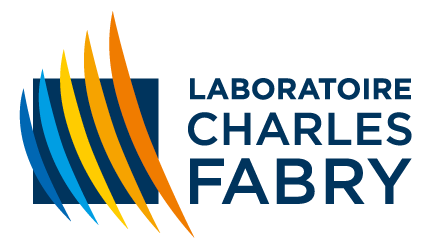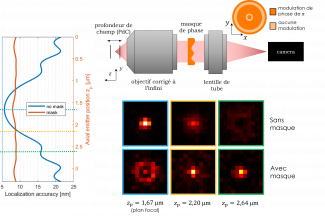Thesis defense of Olivier Lévêque
- Soutenance de Thèse
- Evénement scientifique
Thesis defense of Olivier Lévêque, PhD student in the Imaging and Information group, on 03 February 2022 at 10h00am in the auditorium of the Institut d'Optique Graduate School in Palaiseau (and by videoconference), on the topic: "Co-design of imaging systems for depth of field extension - Application to single molecule localisation".
|
Abstract: Today, a large majority of imaging systems are made up of both a high-performance optical system and digital processing of the acquired images. Designing the optics jointly with the processing is called "co-design." Although such an approach is difficult to implement, there are several problems in which its effectiveness has been demonstrated. One of them, studied in this manuscript, is the extension of the depth of field using annular binary phase masks. Two types of applications can be here distinguished. For the first one, the final product is an image restored by a deconvolution algorithm. We show that the optimal masks optimized with a criterion based on the Wiener filter or with a criterion based on a nonlinear deconvolution method are practically identical. The second application is the single molecule localization |
microscopy (SMLM), where the acquired image is used to estimate another information: the position or presence of an individual fluorescent marker. We propose a criterion for mask optimization that is no longer based on the quality of a restored image but on the accuracy with which a marker can be localized. With this methodology (based on the Cramér-Rao bound), we have the ability to optimize depth-of-field extension masks under realistic conditions, taking into account the key parameters of an SMLM experiment, and to predict the localization performance they can achieve. We also propose an appropriate processing of the acquired images in order to localize the fluorescent markers with the sub-pixel accuracy predicted by our models. |

